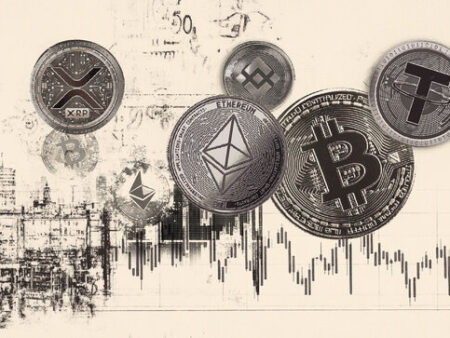Fartcoin Navigates Choppy Waters: Can It Hold Above $1?
Fartcoin (FARTCOIN), the Solana-based meme coin, is currently trading around $1.04, showing a slight recovery of over 1% today. This comes after a significant 43% drop from its May peak of $1.64, a level reached on May 23rd. The critical question is whether Fartcoin can maintain its position above the $1.00 support level.
Positive Q2 Returns Expected Despite May Dip
Despite a challenging May, Fartcoin is anticipated to report its first positive quarterly returns by the end of June. CryptoRank data indicates a Q2 return of 132.5%, a stark contrast to the -51% experienced in Q1. This optimistic outlook follows a remarkable 735% surge to $1.64 after a fee-induced crash in April, which tested the $0.20 support. However, the recent 43% decline tempered May’s performance, ultimately closing at -13.4%.
Technical Outlook: Bulls Defend $1.00 Support, But For How Long?
Fartcoin is currently holding above the $1.00 mark, a robust support level tested twice in May, and the 100-day Exponential Moving Average (EMA) around $0.95.
However, a sell signal from the Moving Average Convergence Divergence (MACD) indicator highlights bearish momentum. This signal occurred on May 25th when the blue MACD line crossed below the red signal line, potentially making short positions in Fartcoin more appealing to traders.
The Relative Strength Index (RSI) trending downwards below the 50 midline suggests stronger bearish control. A reversal could occur as the RSI approaches oversold territory, potentially enticing traders to “buy the dip” and anticipate a larger breakout beyond the $1.64 resistance.
On the other hand, increasing volume in the derivatives market, coupled with a surge in long position liquidations to $5.95 million in the last 24 hours, indicates waning trader interest in Fartcoin.
The subsequent 57% increase in trading volume to $1.90 billion suggests that traders are being forced to close their long positions as Fartcoin declines, contributing to the selling pressure. Beyond the 100-day EMA support at $0.95, other key levels to watch include the 200-day EMA at $0.77, which is 25.5% below the current market rate, and the demand area around $0.40, tested in early April.
Cryptocurrency Metrics FAQs
The developer or creator of each cryptocurrency decides the total number of tokens that can be minted or issued. Only a certain number of these assets can be minted through mining, staking, or other mechanisms. This is defined by the algorithm of the underlying blockchain technology. Since its creation, a total of 19,445,656 BTC have been minted, which is the circulating supply of Bitcoin. On the other hand, the circulating supply can also decrease through actions such as token burning or mistakenly sending assets to addresses of other incompatible blockchains.
Market capitalization is the result of multiplying the circulating supply of a given asset by its current market value. In the case of Bitcoin, the market capitalization in early August 2023 exceeds $570 billion, which is the result of the more than 19 million BTC in circulation multiplied by the price of Bitcoin, which is around $29,600.
Trading volume refers to the total number of tokens of a specific asset that have been traded or exchanged between buyers and sellers within a set trading schedule, for example, 24 hours. Used to measure market sentiment, this metric combines all volumes from centralized and decentralized exchanges. Increased trading volume often denotes demand for a particular asset, as more people are buying and selling the cryptocurrency.
The funding rate is a concept designed to encourage traders to take positions and ensure that perpetual contract prices match those of spot markets. It defines an exchange mechanism to ensure that future prices and periodic price payments converge regularly. When the funding rate is positive, the price of the perpetual contract is higher than the market price. This means that traders who are bullish and have opened long positions pay traders who are in short positions. Conversely, a negative funding rate means that perpetual contract prices are lower than the reference price, so traders with short positions pay traders who have opened long positions.
Stay ahead of the curve in the fast-paced crypto world – explore the latest updates and trends at Cryptonewsfeeds.com.










